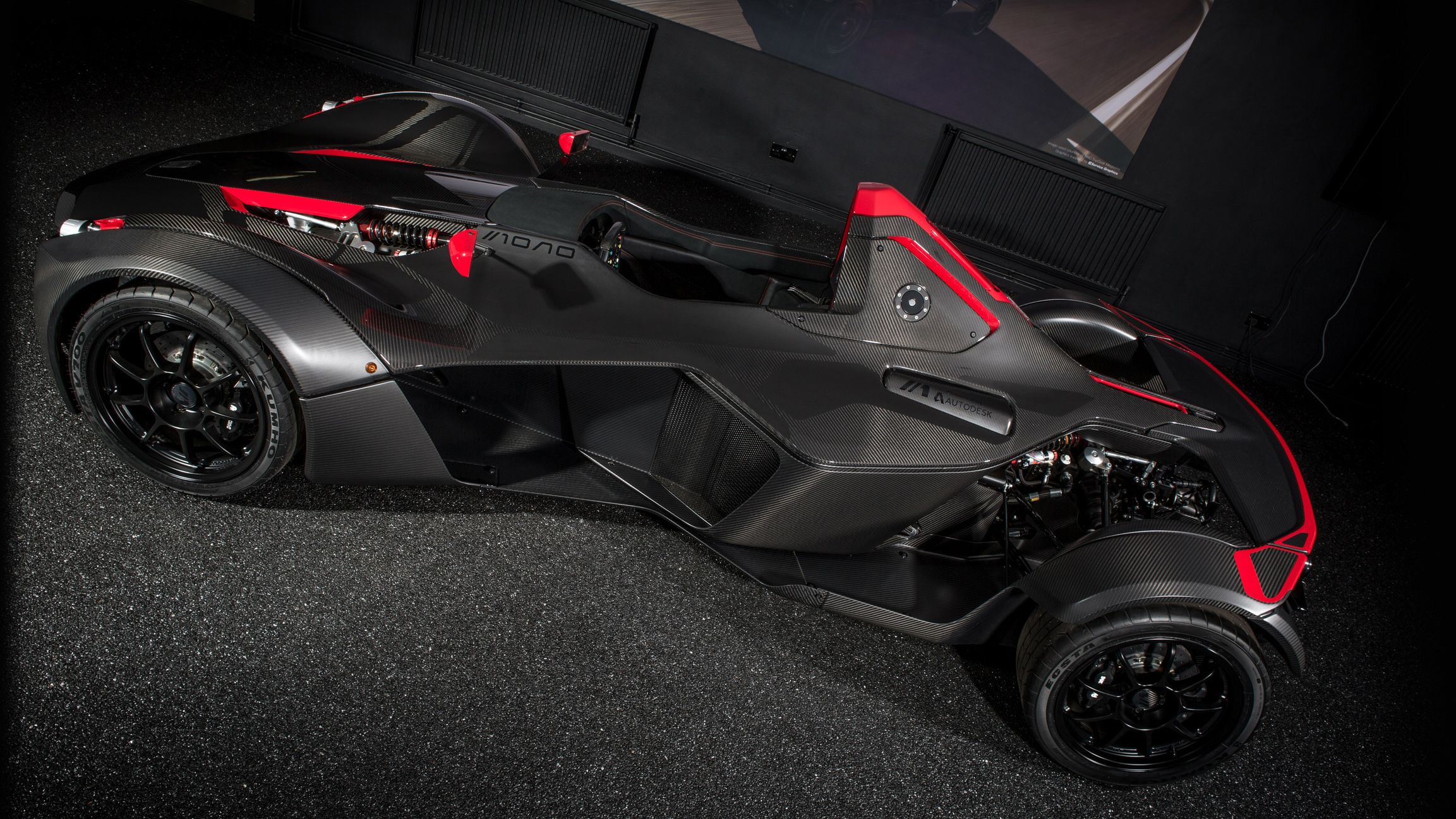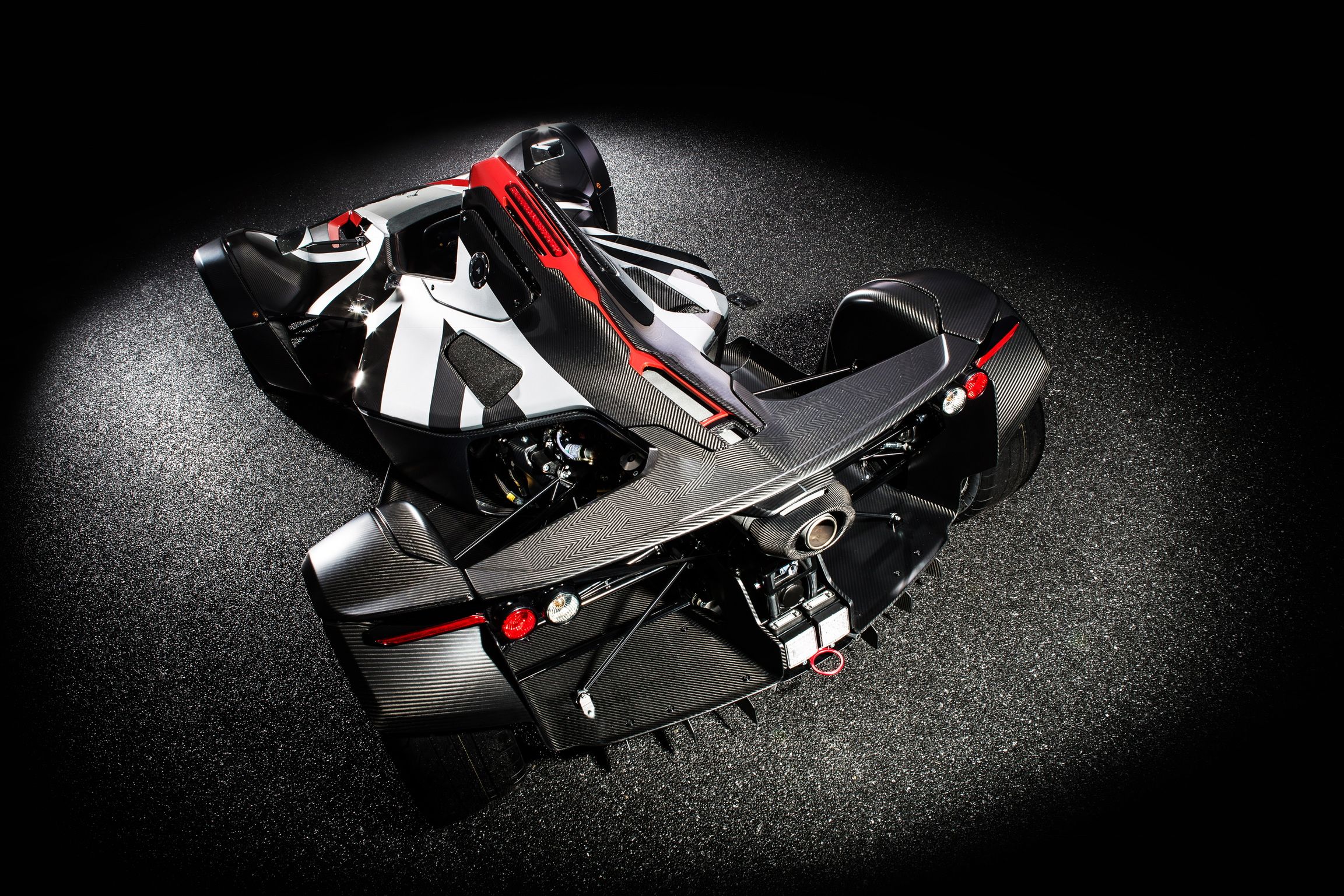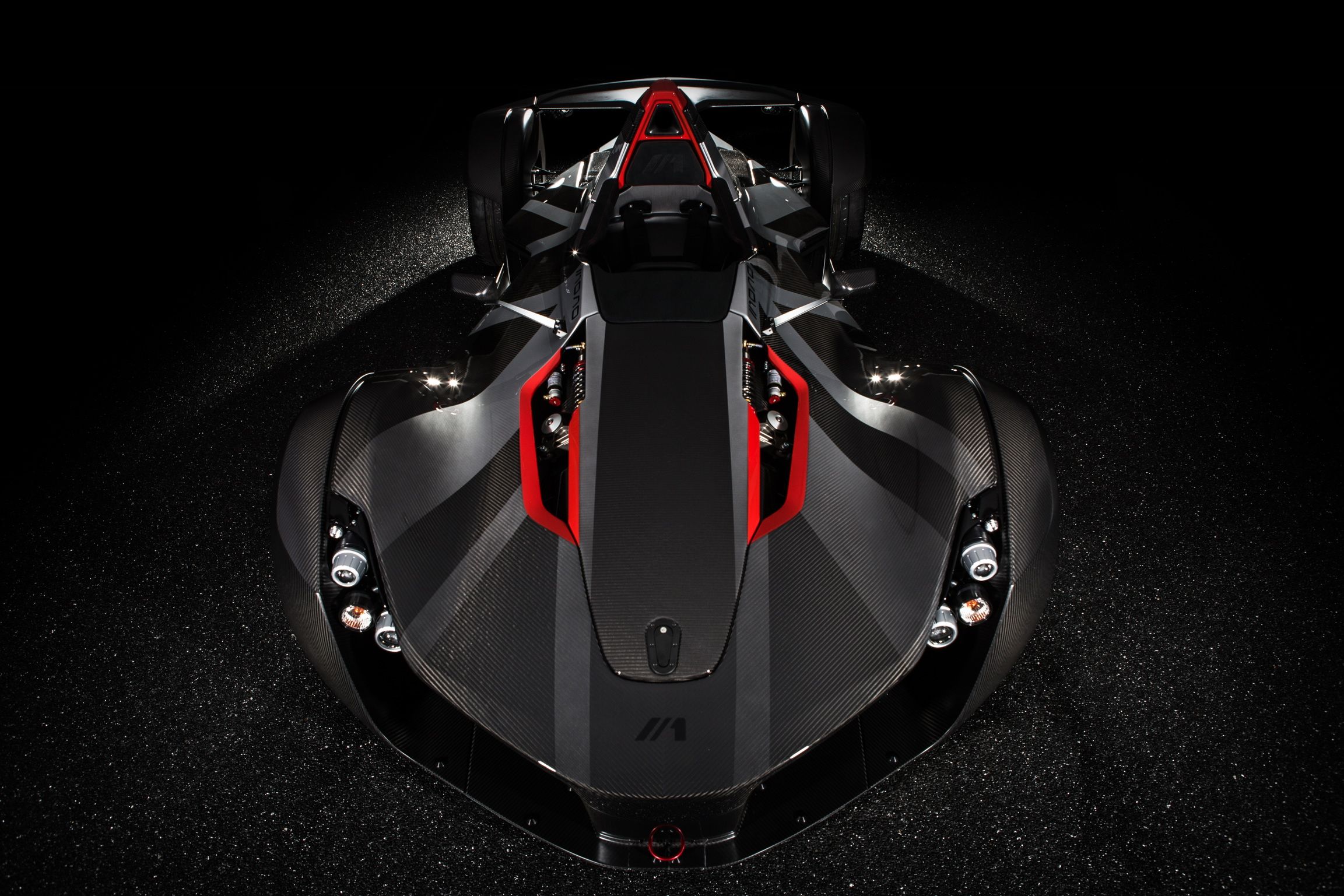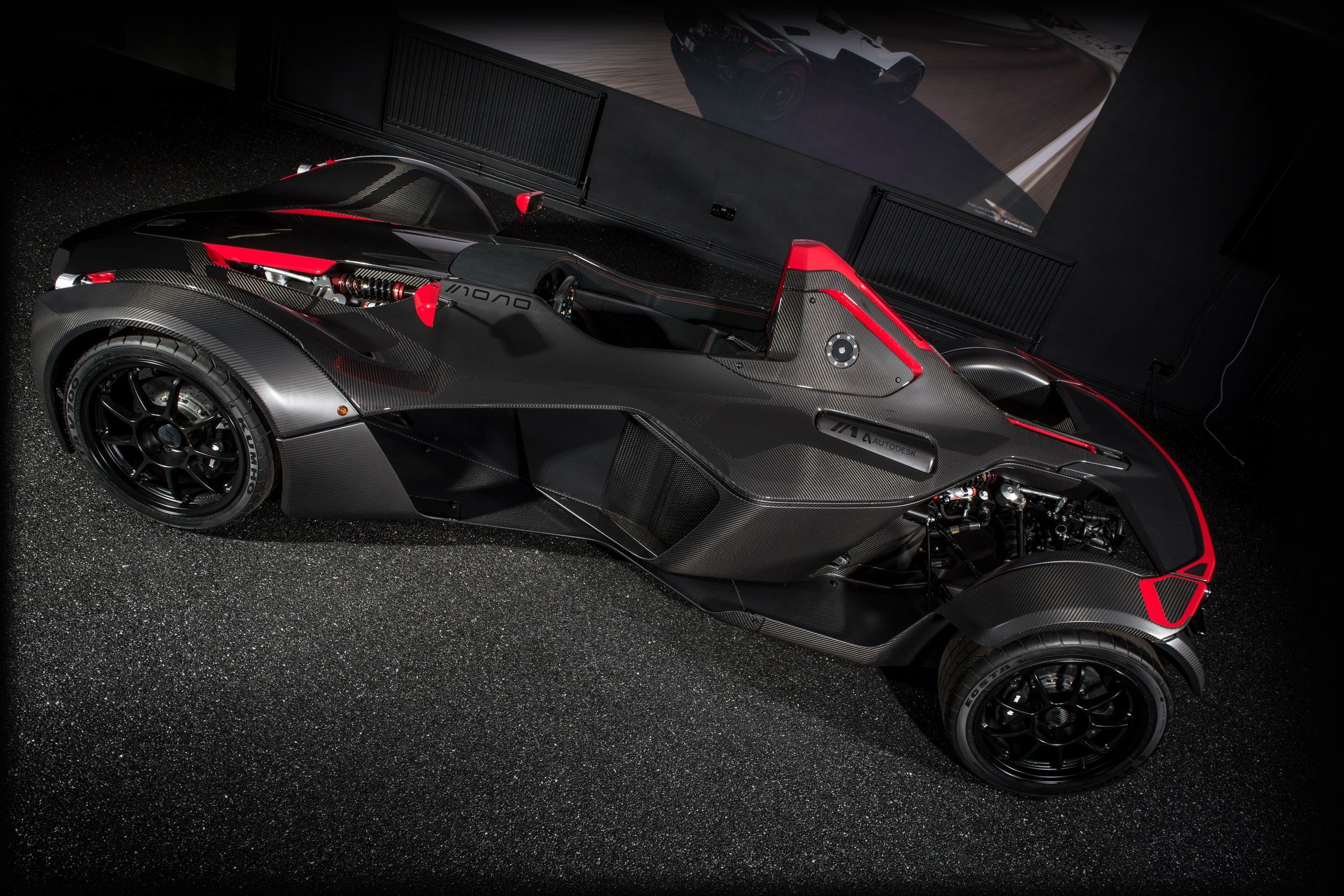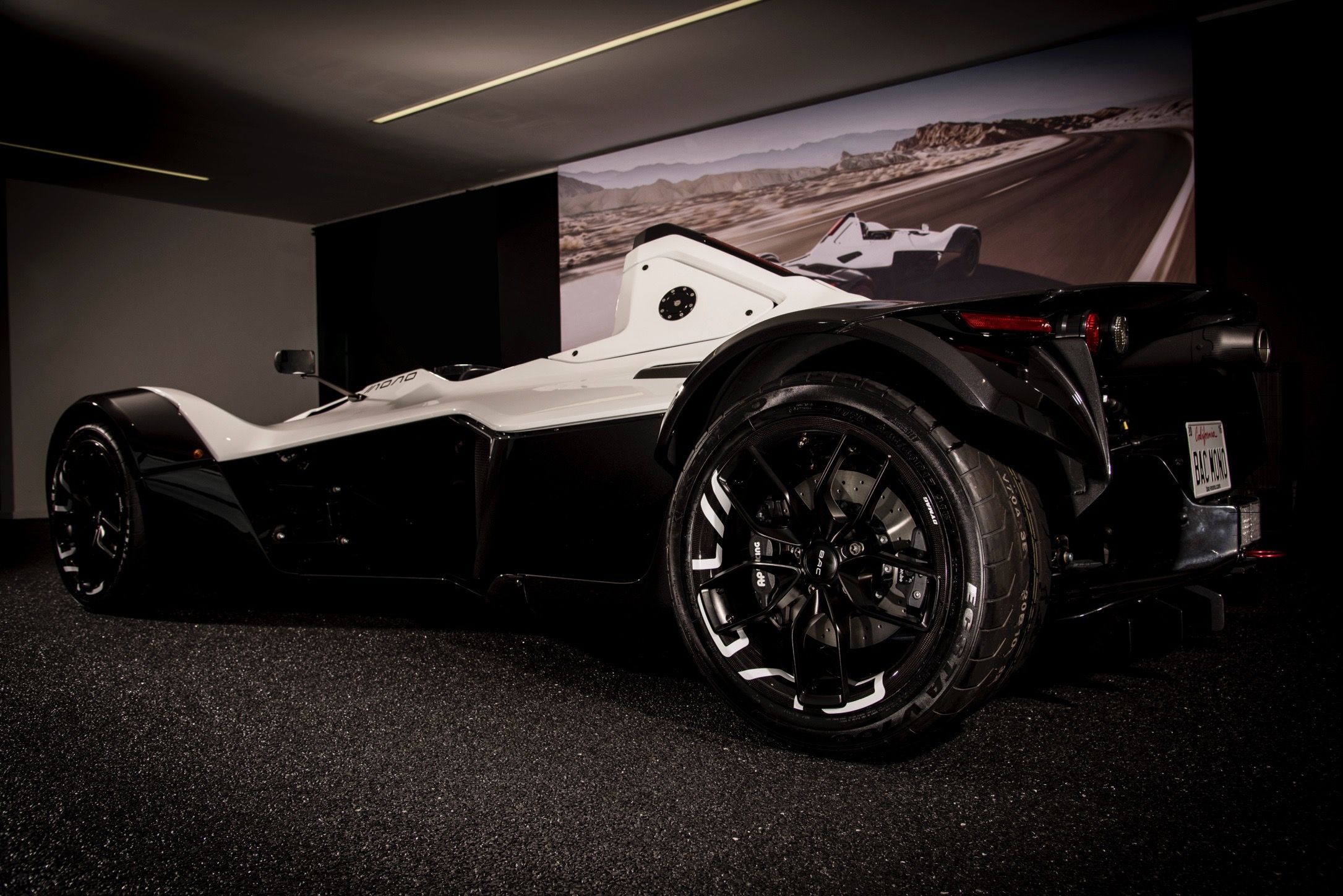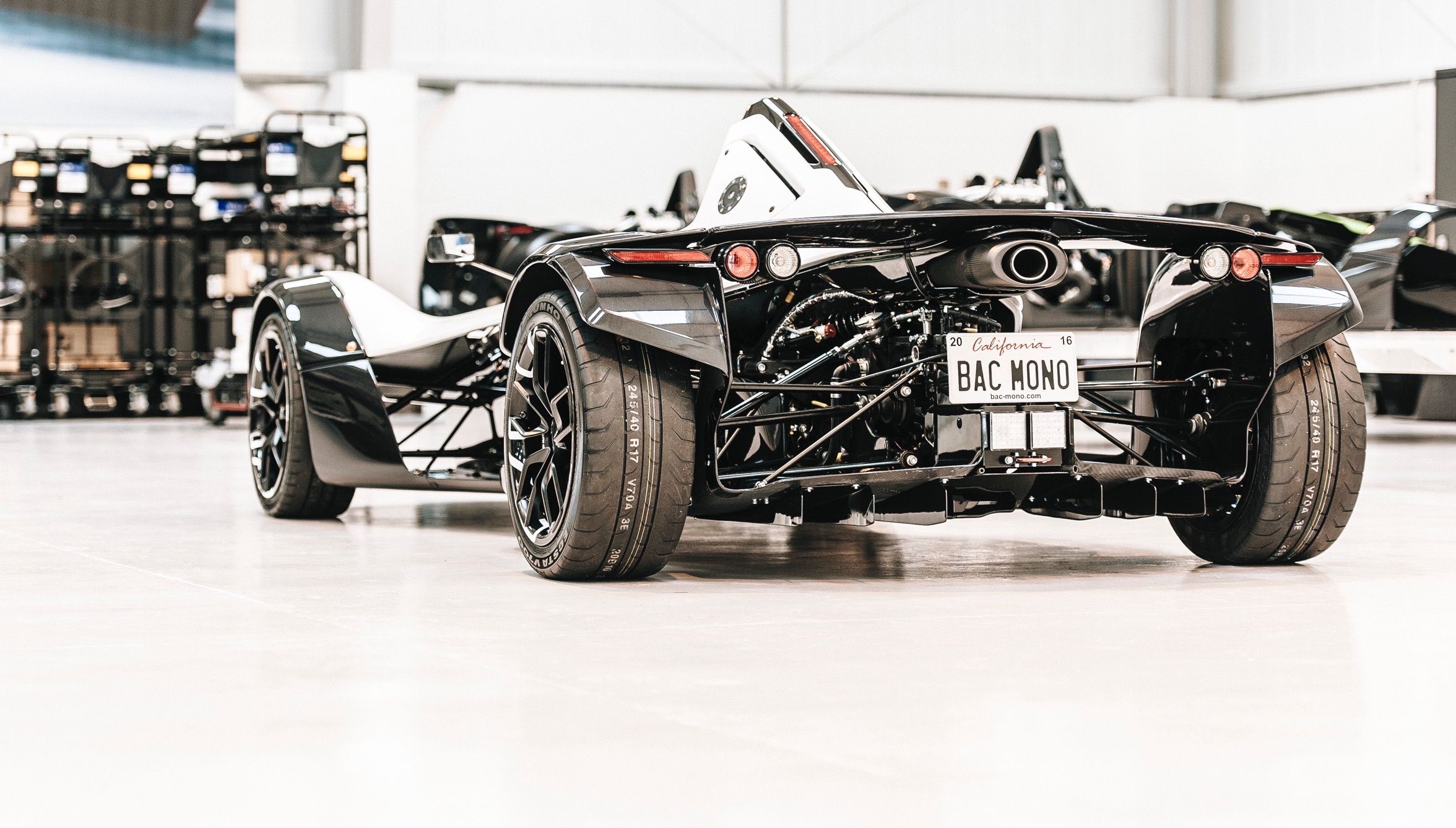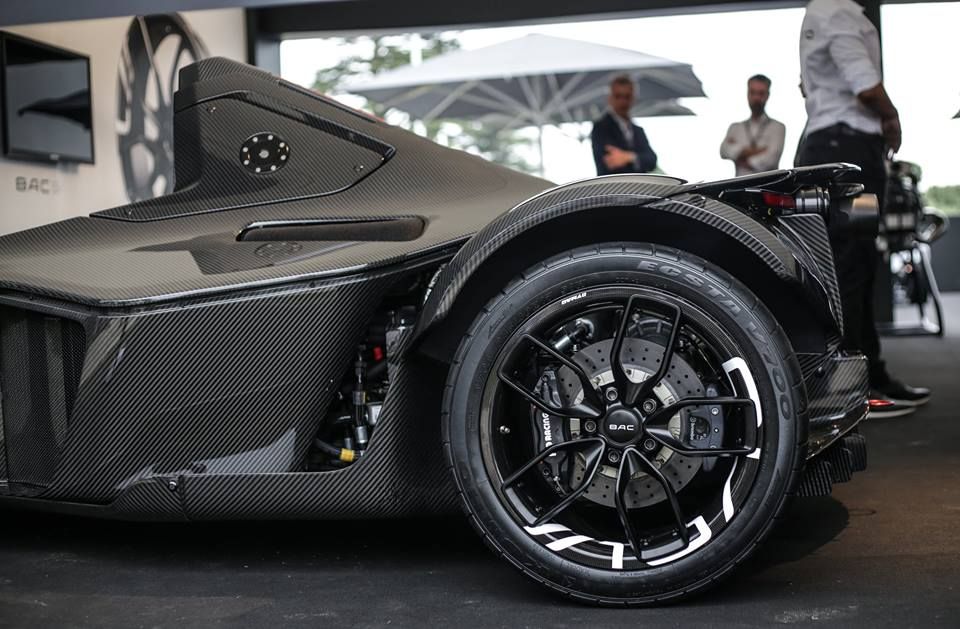BAC, also known as the Briggs Automotive Company, introduced the Mono in 2011, after two years of development. Using a carbon-fiber composite construction over a steel chassis, the Mono is a superlight, single-seat sports car inspired by motorsports. It features an FIA-compliant rollover structure, construction principles borrowed from DTM race cars, and a suspension system specifically developed for track use. Tipping the scales at only 600 kg (1,323), it's among the lightest road-legal vehicles you can buy. The sports car was updated in 2016, when it received a new engine and more carbon-fiber components.
Following the launch of the "facelifted" model, BAC unveiled the Mono Graphene at the "Science in the City" festival in Manchester, the United Kingdom. Compared to the standard model, it features body panels made from graphene, which makes it the industry's first vehicle to use the material. Made from sheets of carbon just one atom thick, graphene is significantly lighter and stronger than carbon-fiber, and BAC claims it would benefit cost, performance, and fuel economy when applied wider in the manufacturing process.
“Making significant weight savings and improving body strength will allow us to offer improved performance to our customers. This is the latest in a line of ground-breaking innovations on the Mono," said BAC director and co-founder, Neill Briggs.
BAC didn't say if and when the Mono Graphene will become available to customers, but the concept could make it to production as soon as the firm is done testing the new components.
Continue reading to learn more about the BAC Mono Graphene.
2017 BAC Mono Graphene
- Make: Array
- Model: 2017 BAC Mono Graphene
- [do not use] Vehicle Model: Array
What Makes the BAC Mono Graphene Special?
The Mono Graphene is essentially a standard Mono, but with the rear wheel arches made from graphene rather than carbon-fiber. The new body parts do nothing to change the vehicle's appearance, as graphene looks almost identical to carbon-fiber. However, looks aren't important here, but the way graphene is being implemented into production cars.
Developed in collaboration with Haydale Composite Solutions, the rear wheel arches are supposedly lighter and stronger compared to the standard carbon-fiber parts. BAC says graphene is around 20 percent lighter than carbon-fiber and 200 times stronger than steel. For reference, the strongest carbon fibers are ten times stronger than steel.
While graphene research and development isn't exactly new, it's commercial use is barely gaining traction. The material hols great promise for various applications, including solar cells, light-emitting diodes, touch panels, and smart windows or phones. As of 2015, a graphene-infused printer powder is available for commercial use, while n 2016 researchers have been able to make a graphene film that can absorb 95 percent of light incident on it. Thanks to BAC, as well as the fact that graphene production is getting significantly cheaper, the material could soon become popular on production models.
BAC says it chose to test the use of graphene on the rear wheel arches due to the size and complexity of the part. If testing of the manufacturing process and how the material is fitted in with the car returns positive results, a sports car with more graphene body panels is likely to be developed and launched soon.
Other than the new rear wheel arches, the Mono Graphene is identical to the standard model, including the cockpit and the drivetrain. The latter is brand-new for the 2016 and pairs a 2.5-liter, four-cylinder engine to a Hewland six-speed sequential gearbox with a limited-slip differential. Prepped by Mountune, the unit pumps 305 horsepower, a 25-horsepower improvement compared to the previous 2.3-liter Cosworth mill.

